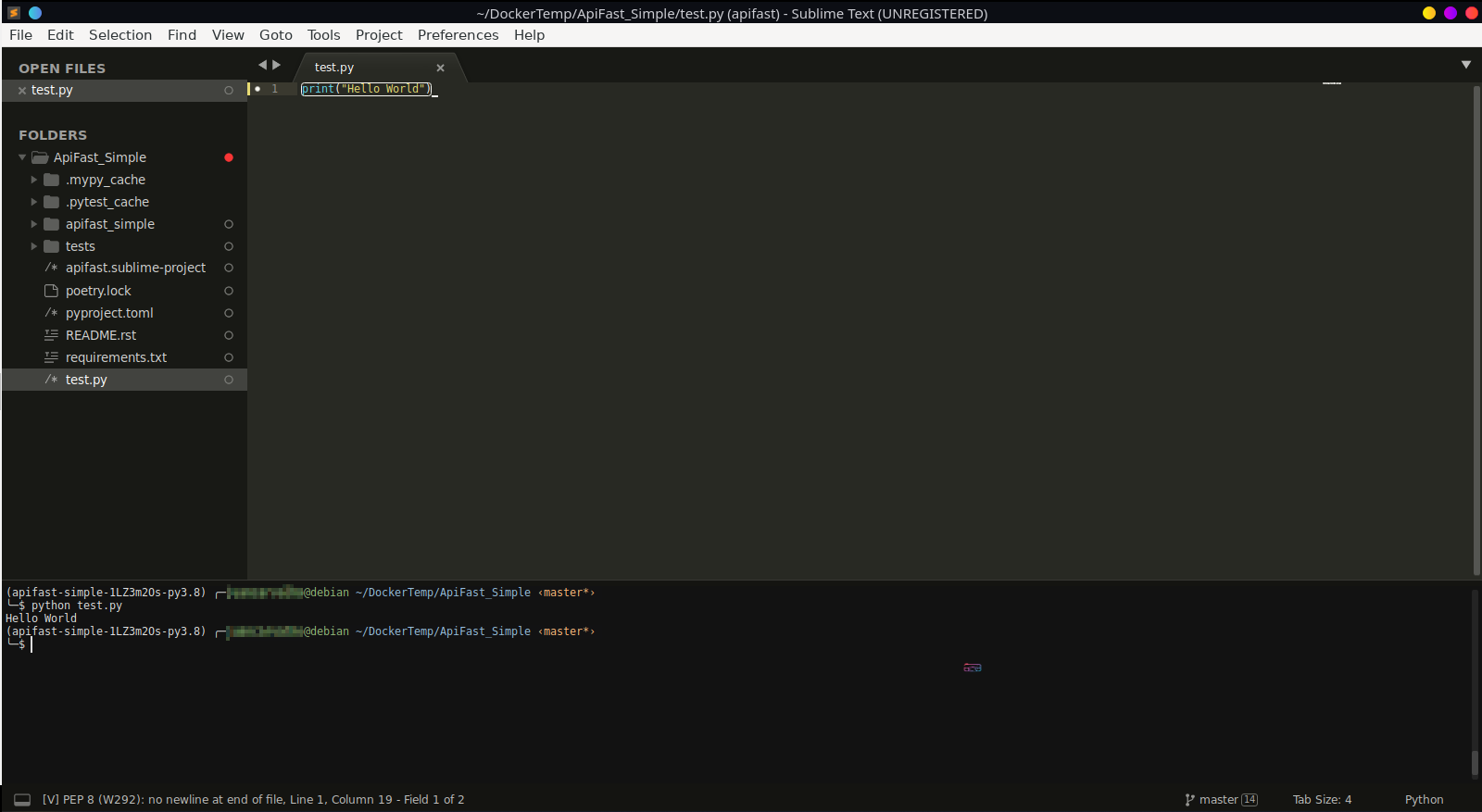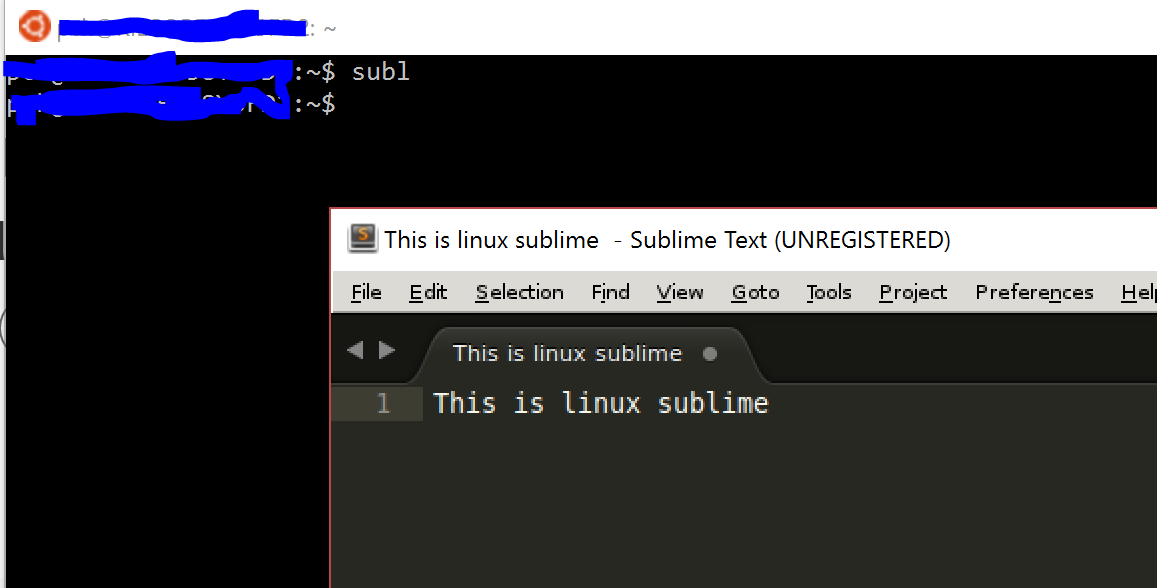- Terminal Sublime Text Linux
- Best Terminal For Sublime Text 3
- Terminal Command For Sublime Text
- How To Open Terminal In Sublime 3
- Best Terminal Package For Sublime Text
- What is Sublime Text 3? Sublime Text 3 is a text editor for coding. It’s like TextEdit (on Mac) or Notepad (on Windows). You can type text in it and you can save that in different file formats. Except that Sublime Text 3 is specialized for coding. SQL script in TextEdit: The same SQL script in Sublime Text 3: The most obvious differences are.
- Terminal Plugin is a highly recommended tool for power users and professional developers who can launch the Terminal Window within the Sublime Text 3 Editor. The user doesn’t need to close the Sublime tool, just click the Terminal option and the Terminal Window on your screen will be launched.
- Glue a Terminal for Sublime Text Apr 7th, 2014 Glue is a plugin that provides an interface to your shell from the Sublime Text editor. It features command entry within the Sublime Text editor window, standard output display in an editor view, and it works with most system utilities.
Just open 'Sublime REPL: Shell' from the command palette and you will have an interactive shell from within Sublime Text. However keep in mind that since it is just a plugin for a text editor and not a full blown terminal. Terminal allows developers to open terminals directly inside the current file they're working on, or the current root project folder, while working in Sublime Text. This time saving feature has been a hit with programmers and the plugin currently sits on Project Control's 100 most downloaded list.
Sublime Text 3 ships with a CLI called subl. By default you can’t use this command line utility unless you do some fiddling.
A word about the load $PATH
The Sublime Text documentation on this tool does explain where it’s located (/Applications/Sublime Text.app/Contents/SharedSupport/bin/subl) but it assumes you have ~/bin (or /Users/username/) in your load path ($PATH) which is downright silly. There’s a better way.

The /usr/local/bin is in the load path by default on OS X, so it’s a much better place to symlink (create a symbolic link — or shortcut) that will allow you to run the subl utility from your Terminal app.
First up, check your own $PATH by running: echo $PATH. This is what mine returns:
As you can see the /usr/local/bin path is included by default on OS X.
Installation
Note: These instructions assume you’re using the Terminal app out of the box, without ZSH or any fancy prompts like that. I trust you will be able to adapt these instructions yourself if you do.
Yes, I name the symlink sublime instead of subl because I believe you should always be explicit. You should never have to type the full word anyway. Typing sub + Tab should auto-complete the full name of the symlink.
Testing
Open a Terminal window and run:
or
or even
Conclusion
Now you don’t need to get out of Terminal to simply open a file or a folder, you didn’t have to add an “alias” or yet another bin directory to your .bash_profile which the official instructions given by the Sublime team seems to recommend.
Have fun, Sublime is a great editor. Check out the most recent beta release of Sublime Text 3.
In this blog post, I am going to show you how you can setup Sublime Text editor for a 'Competitive coding' friendly environment!
We will see how to do the task of writing to stdin and reading from stdout in a single window of Sublime Text!
Also, you will not have to manually input in the terminal!
1. Install Sublime Text
If you do not have Sublime Text installed in your system, you can download it from here.
2. Create necessary files
Now, we will require 3 basic files:
- A .cpp file (as I am going to use C++ programming language for writing code). In this example, I will name this file as example.cpp
- input.txt (file on which we will write stdin)
- output.txt (file on which C++ program will write stdout)
3. Setting Layout
Now, its time to setup the layout of the Sublme Text window.
Steps:
- Open all the files we created in last step, i.e example.cpp, input.txt, output.txt.
- Now, in menu bar, select View -> Layout -> Columns: 3 . Alternatively, you can use keyboard shortcut Shift+Alt+3. As a result, window will get partitioned into 3 columns.
- Now, we will try to fix input.txt and output.txt in a single column. For this, select View -> Groups -> Max Columns: 2 . As a result, input.txt and output.txt will get stacked in a single column.
Here is how your Sublime Text Editor window should looks like now:
{:class='img-responsive'}
4. Writing to stdin and reading from stdout
Now, we will have to write C++ code in such a way that it can read stdin from input.txt and write stdout to output.txt .

Here are the lines we need to add to main function of our C++ code:

What will freopen do?
freopen is used to associate a file with stdin or stdout stream in C++.
Terminal Sublime Text Linux
Why ONLINE_JUDGE?
ONLINE_JUDGE is a preprocessor directive on the online judge of most of the competetive coding sites, where it is defined to be true. So, when you submit the code containing above lines, these lines will simply get skipped due to ifndef condition!
Best Terminal For Sublime Text 3
You can find the same code for Python and Java here.
5. Running the code
Now, we are left with the task of running our code.
Terminal Command For Sublime Text
Once you have written a C++ program and added the lines as stated in Step 4, you need to build your code. You can select any C++ build system for this purpose.
Just write all the input that you want to pass as stdin in input.txt and build/run your code. And you will obtain the output as stdout in output.txt!
How To Open Terminal In Sublime 3
Reference video
Best Terminal Package For Sublime Text
Here is a reference video which demonstrates the 5 steps as discussed above.
